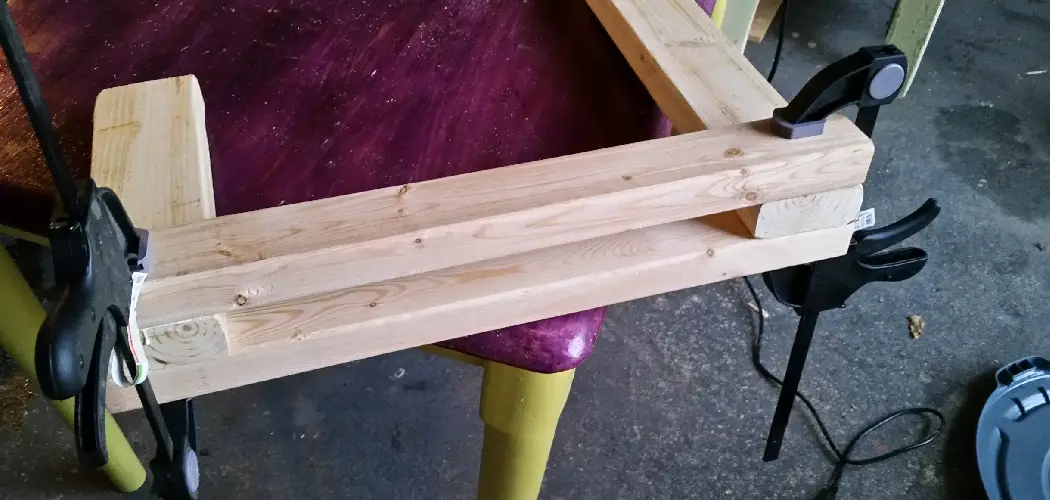The process of gluing boards together may seem simple, but if you have ever done it, you know that it can be challenging. The biggest problem that woodworkers face when gluing boards together is warping.
If you are not careful, your boards can twist, bend, or bow, ruining your project. In this blog post, we will share some tips on how to glue boards together without warping. By following these tips, you can take the first step in mastering the art of woodworking.
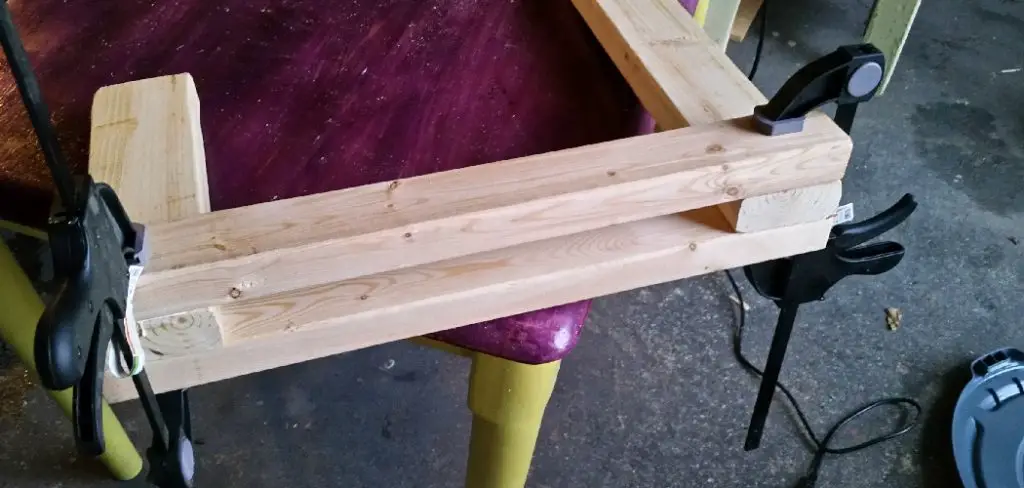
Can You Glue Boards Together Without Warping?
Woodworkers are always looking for ways to achieve seamless joins when working on projects that involve multiple pieces. One common concern when gluing boards together is the possibility of warping. While it can happen, there are ways to mitigate or even prevent it from happening altogether.
One approach is to ensure that the grain direction on each piece is the same, as that helps maintain the wood’s structural integrity. Another tip is to use clamps to ensure a tight fit between the boards and hold them securely while the glue sets. With a bit of patience and attention to detail, gluing boards together without warping is entirely possible, even for those with minimal experience in woodworking.
Why Should You Glue Boards Together Without Warping?
Gluing boards together might seem simple, but there’s more to it than just applying some adhesive and sticking them together. The key to creating a strong, durable bond is how you approach the process.
One of the most important considerations is preventing warping, which is a common problem when joining two or more boards together. By taking extra precautions and following best practices, you can ensure that your glued-up boards stay flat and stable over time, reducing the risk of damage or failure.
So, if you want to create beautiful, long-lasting projects that stand the test of time, it’s crucial to learn how to glue boards together without warping.
Mastering the Art of Gluing Boards: How to Glue Boards Together Without Warping
1. Choose Straight and Flat Wood
The first step in preventing warping is to use straight and flat wood. Before you start gluing, make sure that the boards are straight and flat. If the boards are warped or bent before you start gluing them, they will only warp even more once they are glued together. To ensure that your boards are straight and flat, use a jointer, planer, or hand plane to plane them.
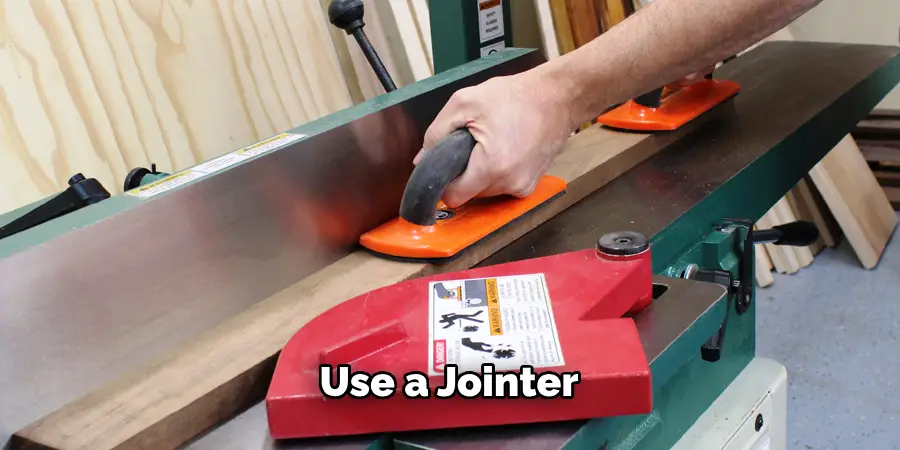
2. Use Parallel Clamps
Parallel clamps are your best friend when it comes to gluing boards together. They apply pressure uniformly along the boards’ whole length, preventing bending, twisting, or bowing. Place the clamps evenly spaced along the boards and tighten them gradually. Do not over-tighten the clamps, which may cause the boards to bend.
3. Alternate the Grain Direction
Another tip to avoid warping is to alternate the grain direction as you glue. When you alternate the grain direction, it counteracts the natural tendency of the wood to bend. In other words, if one board is bending in one direction, the other board bends in the opposite direction, canceling out the bending force.
4. Use a Caul or Call
A caulk or call is a small, thin piece of wood that distributes clamping pressure evenly over the boards. It also protects the wood from direct contact with the clamps, which can damage the surface of the wood. Place the caulk or call between the clamps and the wood. It is especially useful when gluing thin boards, as it prevents them from bowing or warping under pressure.
5. Keep the Boards Aligned
It is crucial to keep the boards aligned as you apply clamping pressure. Even a slight misalignment can cause one board to bend more than the other, resulting in warping once the glue dries. Use a carpenter’s square to ensure that the boards are perpendicular and parallel, and adjust them as necessary before tightening the clamps.
6. Use High-Quality Glue
The type of glue you use can also affect the likelihood of warping. It is essential to use high-quality wood glue specifically made for woodworking projects. These glues have a longer open time, allowing you to adjust the boards before the glue sets. They also have a higher bond strength, ensuring the boards stay together without gaps.
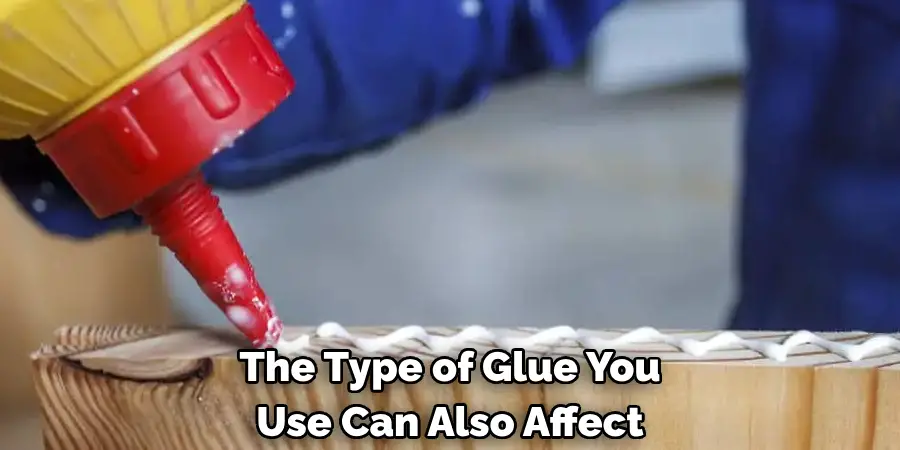
7. Let the Boards Dry Flat
Once you have applied glue and tightened the clamps, it is crucial to let the boards dry completely in a flat, horizontal position. If you leave them standing vertically, the weight of the boards can cause them to bend or sag. Also, it is best to leave the clamps on for at least 24 hours to ensure that the glue fully dries and creates a strong bond between the boards.
By following these tips, you can successfully glue boards together without warping. Remember to start with straight and flat wood, use parallel clamps, alternate the grain direction, use a caul or call, keep the boards aligned, use high-quality glue, and let the boards dry flat. You can create strong and durable joints without any warping issues with proper technique and patience.
5 Considerations Things When You Need to Glue Boards Together Without Warping
1. Choose the Right Glue
When gluing boards together, it is important to choose the right glue. A water-resistant adhesive such as polyurethane glue or epoxy resin is best for bonding wood together. These glues are strong and will not warp the wood when exposed to moisture. Additionally, they provide a more secure bond than other types of adhesives.
2. Clean and Sand the Boards
Before gluing boards together, it is important to clean and sand them first. This will help remove any dirt or debris on the board’s surface and smooth out any rough patches. It is also important to make sure that both surfaces are completely dry before applying the adhesive.
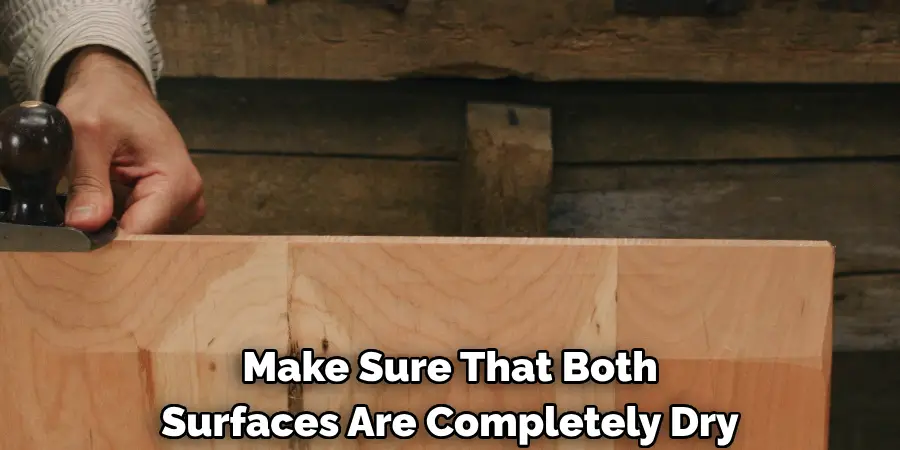
3. Use Clamps
Using clamps when gluing boards together can help prevent warping by keeping the boards in place while the adhesive sets. The clamps should be evenly spaced across the length of the boards and tightened enough to keep them firmly in place without damaging them.
4. Allow Adequate Drying Time
Another key factor in preventing warping when gluing boards together is allowing adequate drying time for the adhesive to set properly. Depending on the type of glue used, this could take anywhere from several hours to several days, so it’s important to follow instructions carefully and allow enough time for proper curing before moving on to other tasks or projects with your newly glued board(s).
5. Apply Pressure
Applying pressure after gluing can also help reduce warping by ensuring that all parts of each board are firmly bonded together without gaps or air pockets. This can be done by placing a heavy weight on each board once they have been clamped together or using a rubber mallet to tap down any areas that appear uneven or raised after clamping.
4 Common Mistakes People Make When Trying to Glue Boards Together Without Warping
1. Not Clamping the Boards Together
One of the most common mistakes people make when trying to glue boards together without warping is not clamping them together tightly enough. It’s important to use strong enough clamps to hold the boards in place while the glue dries. Otherwise, you risk having your boards warp over time. Additionally, it’s important to ensure you evenly distribute the pressure from the clamps across all of your boards.
2. Not Applying Enough Glue
Another mistake people often make when gluing boards together is not applying enough glue. You need to ensure sufficient glue between each board; otherwise, they won’t be held together securely and may warp over time. Additionally, it’s important to make sure that you spread the glue evenly across all of your boards so that they are held together equally.
3. Not Letting the Glue Dry Completely
A third mistake people often make when gluing boards together is not allowing enough time for the glue to dry completely before removing or handling the clamps. If you remove the clamps too soon, there is a chance that your boards will shift and warp due to gravity or other external forces acting on them before they have had a chance to set properly.
4. Using Too Much Glue
Finally, another mistake people often make when gluing boards together is using too much glue. Applying too much glue can cause problems such as warping or bubbling of wood due to excess moisture being trapped between two pieces of wood as it dries out slowly over time. To avoid this problem, it’s best to use just enough glue for a thin layer between each board and no more than that.
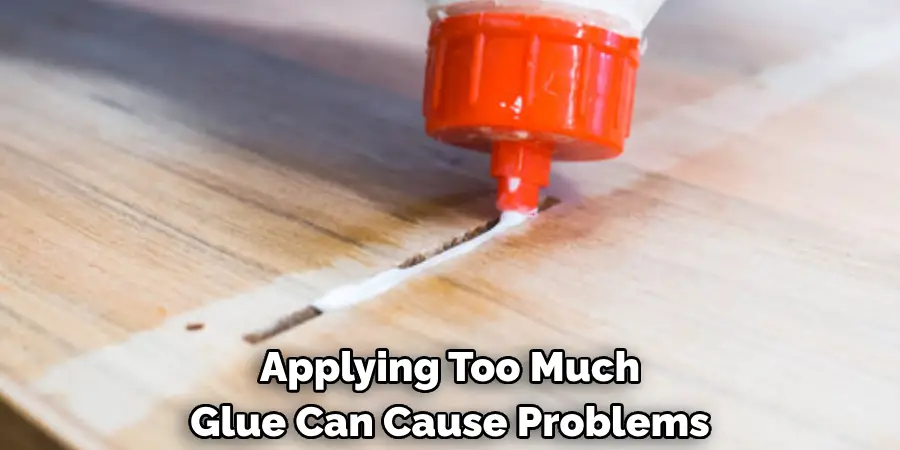
Conclusion
By using these tips, you can glue boards together without the warping that can ruin your project. Remember to start with straight and flat boards, use parallel clamps, alternate the grain direction, use a caul or call, and allow sufficient time for the glue to dry.
The success of your woodworking project depends on the details and the care you put into it. Thanks for reading our post about how to glue boards together without warping.
You can check it out to Make Cardboard Look like Wood

